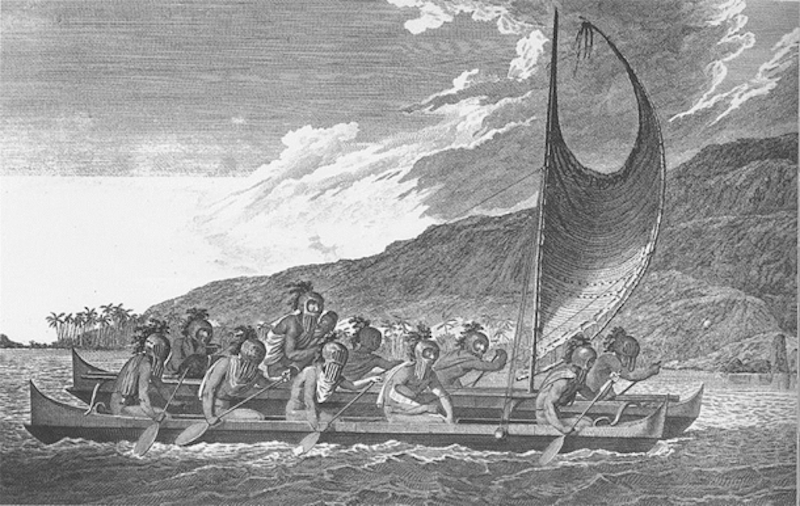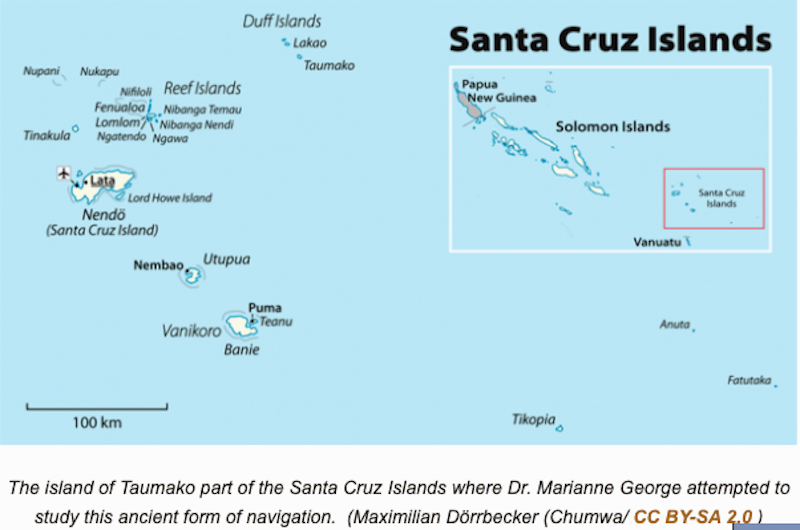The Enigmatic Te Lapa lights, Utilized by Polynesians for Ocean Navigation

The Polynesian peoples have long been known as incredibly skilled sailors, and have navigated the vast and seemingly empty expanse of ocean - in search of new islands to settle. This they did with amazing success: Polynesians now inhabit a number of islands, large and small, that are scattered around the Pacific Ocean. Some of these islands are hundreds and thousands of kilometers distant from one another, and this creates a certain puzzle - how did the ancient Polynesians cross such great distances with only the rudimentary skills? A lasting enigma passed down the generations might be the answer - the guiding Te Lapa lights.
Te Lapa - a Phenomenon That's Hard to Explain
Older Polynesians have long been talking of the “Te Lapa”, a mysterious phenomenon that allegedly helped them find new and distant islands. The term denotes a light, usually reflected upon the surface of the ocean, which was utilized by ancient sailors as a handy navigation aid. Following the lights would lead to new islands. Modern science, however, is having troubles explaining the exact nature behind “Te Lapa”.
While the phenomenon was long known amongst venerable Polynesians, it was only realised by Western researchers in 1972, when David Lewis described it in his book, “We, the Navigators” . It quickly posed a conundrum in scientific circles, simply by being hard to ascribe to a naturally occurring phenomenon. Up to that point, science could explain all traditional methods of oceanic navigation - all except Te Lapa. So that is precisely why Dr. Marianne “Mimi” George embarked on a quest to solve the riddle of this Polynesian lost skill.
Dr. George, a seasoned sailor and navigator, traveled to the Polynesian island of Taumako in the Santa Cruz Islands, where she met with Te Aliki Kaveia in 1993, in an attempt to study the native navigation practices. Kaveia was the island Chief, and a veteran navigator who has seen Te Lapa many times. Together with Dr. George, he set sail once more - the old way - proving once and for all that the light phenomena did truly exist.
Sailing the Ocean in an Outrigger Canoe
Dr. George eventually saw the Te Lapa lights and was quickly fascinated by them. It was a true navigational aid in every sense - but still hard to explain. Some proposed that it was bioluminescence, or some electromagnetic natural light. Other similar natural phenomena were quickly dismissed.
Te Lapa was described as a linear light appearing on the horizon, best seen at night, and originating from islands. The Polynesian sailors would then follow these lights to their source, thus safely sailing towards such distant goals. The lights were described as “streaking”, “flashing”, and “darting” - and true to that, the Polynesian name “Te Lapa” translates to “something that flashes”, or “flashing light”. This enigmatic light, Dr. George noted, is used for navigation no more than 120 miles (193 km) from shore, and as little as 2 miles (3 km). Te Aliki Kaveia confirmed this, adding that the distance of 100 miles (160 km) is ideal for following Te Lapa. Either way, it was learned that the greater the distance, the slower Te Lapa flickers, making it easier to follow as a guideline.
But none of this explained the source of the light. One interesting hypothesis was brought up by George and Kaveia, and it was centered on oceanic swells. These powerful large swells spread out the four diagonal corners of a compass, and travel the ocean driven by seasonal storms. They then bounce off islands, meeting each other in predictable interference patterns. These patterns can be utilized by seasoned sailors as an indication of land close by. And the raised curve of the intersecting waves could be acting as a huge lens that reflects the Te Lapa lights. While the theory is quite plausible, there is still no explanation for the source of the reflected light. Dr. George suspected electromagnetic emissions from tectonic movements could be the source.

When Even Science is Stumped
Many leading scientists were quick to dismiss any possibility of Te Lapa as an unexplained phenomenon. They considered it simply too obscure, poorly documented and researched in order to study in detail and fully confirm. But oral traditions are still there, proving the existence of these odd oceanic lights. In various islands settled by Polynesians, there are different terms all denoting the same occurrence. On the distant island of Nikunau it is known as “Te Mata”, or “The Glory of the Seas”, whereas on Tonga it is known as “Te Tapa”, meaning “To Burst Forth with Light”.
Whatever the true scientific explanation of Te Lapa is, the phenomenon still proves to us that science is not almighty. There were navigators and maritime explorers for centuries before the earliest European voyagers. The Polynesians stand out as the most skilled, having conquered the vast Pacific Ocean on nothing but crudely built outrigger canoes. What their secrets were, we may never know…
Source: ancient-origins.net
